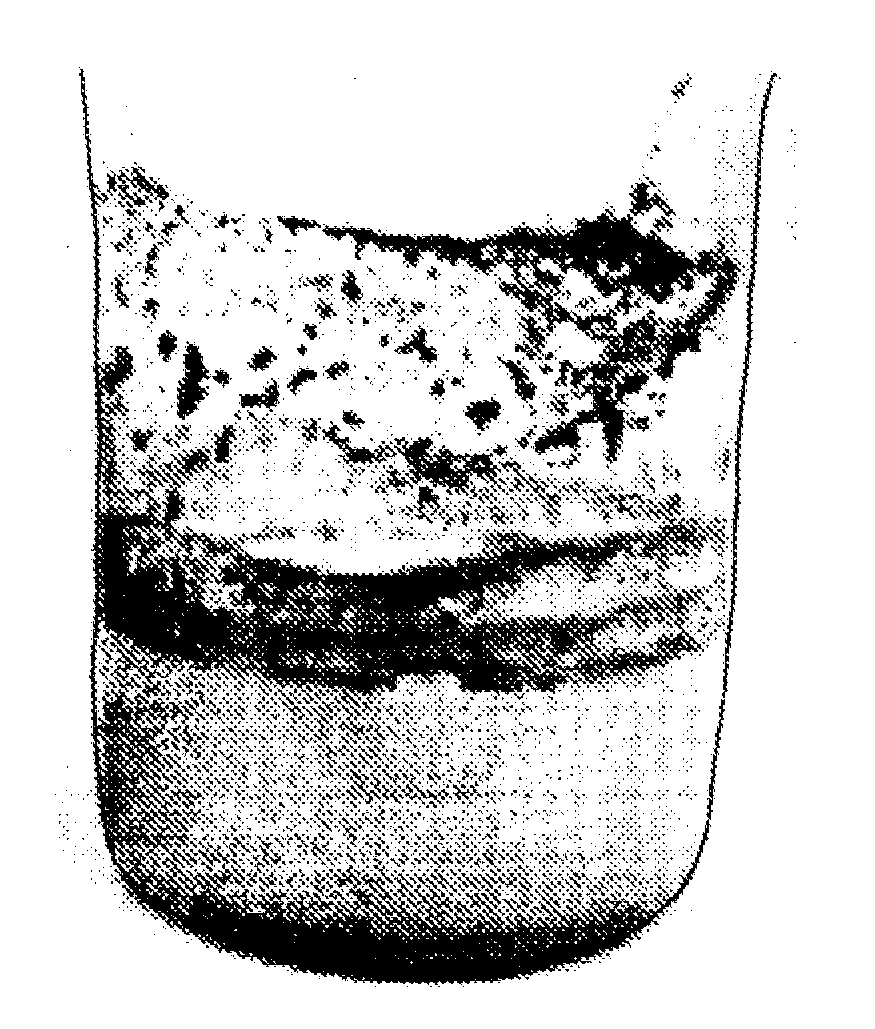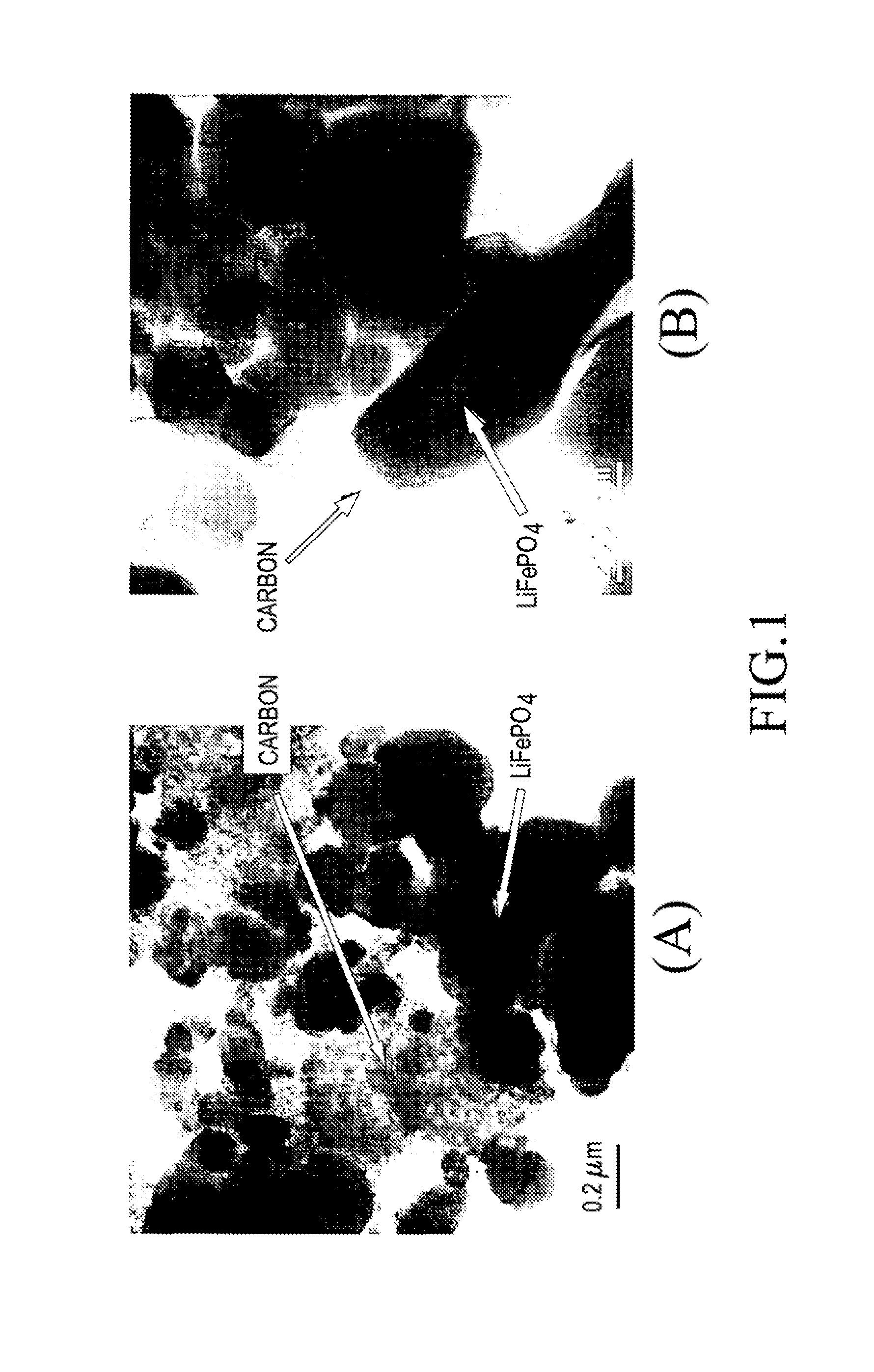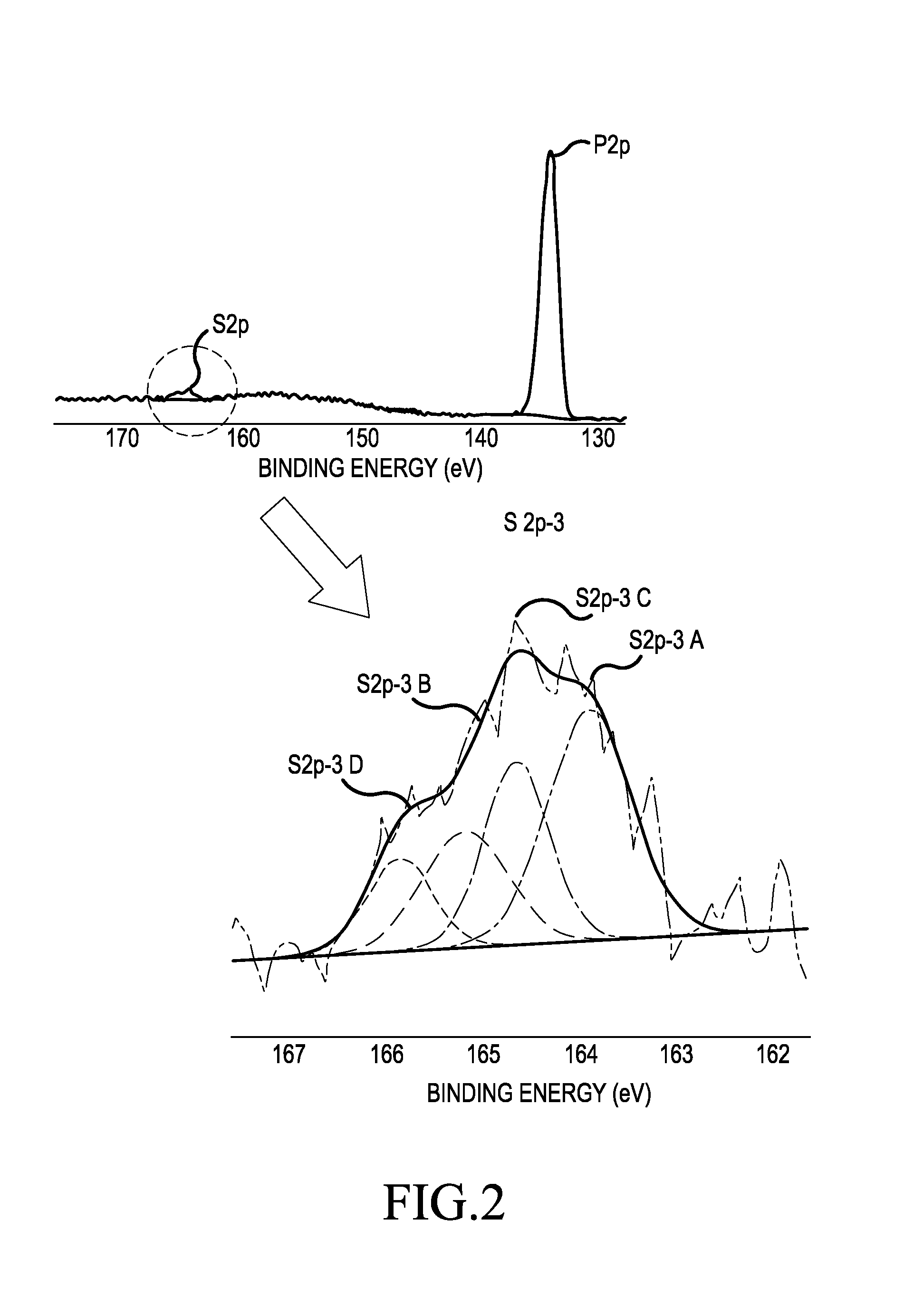Carbon-coated lithium iron phosphate of olivine crystal structure and lithium secondary battery using the same
a lithium iron phosphate and olivine crystal technology, applied in the direction of cell components, final product manufacturing, sustainable manufacturing/processing, etc., can solve the problems of low stability and high cost, limitations of mass-use as a power source for electric automobiles, and linio/sub>2/sub>is unsuitable for practical application to mass-production at a reasonable cos
- Summary
- Abstract
- Description
- Claims
- Application Information
AI Technical Summary
Benefits of technology
Problems solved by technology
Method used
Image
Examples
example 2
[0094]Iron sulfate and phosphoric acid were dissolved in distilled water at an equivalent ratio enabling HFePO4 to be obtained, and HFePO4 was synthesized while increasing basicity (pH) of the obtained aqueous solution under the condition that sulfur remains in the process of obtaining a precipitate by a coprecipitation method. The HFePO4 thus synthesized was mixed with lithium carbonate and sugar, followed by spray-drying to prepare precursor particles, the precursor particles were baked under a nitrogen atmosphere at 700□ for 11 hours, to prepare lithium iron phosphate in which carbon is coated by chemical bonding through sulfur (S).
example 3
[0105]95% by weight of lithium iron phosphate prepared in Example 1, as a cathode active material, 2.5% by weight of Super-P as a conductive material and 2.5% by weight of PVdF as a binder were added to NMP, to prepare a cathode mixture slurry. The slurry was coated on one surface of an aluminum foil, followed by drying and pressing, to manufacture a cathode.
[0106]An electrode assembly in which Cell Guard™ as a separator is interposed between Li metal foils as the cathode and the anode was manufactured, and a lithium non-aqueous electrolyte solution containing 1M LiPF6 was added to a mixed solvent of cyclic and linear carbonates to manufacture a battery.
example 4
[0107]A battery was fabricated in the same manner as in Example 3 except that lithium iron phosphate prepared in Example 2 was used as a cathode active material.
PUM
| Property | Measurement | Unit |
|---|---|---|
| thickness | aaaaa | aaaaa |
| volume density | aaaaa | aaaaa |
| crystal structure | aaaaa | aaaaa |
Abstract
Description
Claims
Application Information
 Login to View More
Login to View More - R&D
- Intellectual Property
- Life Sciences
- Materials
- Tech Scout
- Unparalleled Data Quality
- Higher Quality Content
- 60% Fewer Hallucinations
Browse by: Latest US Patents, China's latest patents, Technical Efficacy Thesaurus, Application Domain, Technology Topic, Popular Technical Reports.
© 2025 PatSnap. All rights reserved.Legal|Privacy policy|Modern Slavery Act Transparency Statement|Sitemap|About US| Contact US: help@patsnap.com



